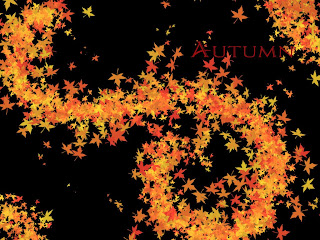Memoir(s) As Un-forgetting
There is, throughout all times, the recognition of a certain moment, a dangerous one, upon which one catches a glimpse of how one re-turns re-membering that participates in a vision of things to come. These very private moments are muse and such encounter with the pluralism of inner movements of soul teach us how to live a human life in the world of present times. It is here between the world of the times and the world of the depths the soul of memoir(s) and reveries moisten our tired language and refresh our dry spirit.
Mythopoetry Scholar 2012 offers a variety of memoir and reverie narratives
this time, one of which is by Robert D Romanyshyn titled, "Living with The Dead: Re-Collections of an Unfinished Life." Before I share an excerpt from Robert's memoir(s) I'd like to step back and step down and through an old biblical quote and old blog post written by someone else.
It seems a good deal of the spirit of the times shaping our national soul speak up founded upon biblical scripture passages. So let me begin with one you may recognize the bible teaches in John 3:8. Now there are many translations of this passage so to get a feel for the idea presented in this passage for how people get spiritually reborn go read some of these translations and then come back.
Now I want to give you the link to a remarkable blog titled, "The Way Of What Is To Come" by Heidekolb. Heide M. Kolb writes from a Jungian perspective and she has taken the title of this blog from the first section of Jung's Liber Primus. This blog reveals that Jung makes a distinction between the spirit of the times and the spirit of the depths. Most of us know Jung's Liber Primus as The Red Book. Kolb moves between reading Liber Primus for herself and also the translation provided in The Red Book to write her blog.
Heide Kolb writes that Jung suggests each era has its own unique spirit or zeitgeist and sees this as shaping the ego consciousness, one's identity and one's bonds to the national soul. But she also says that Jung indicates the spirit of depths is older and stronger and it is the vision from the depths that provides one a light of guidance to the way that is to come in a marvelous, mysterious manner whose spirit one cannot get from the language of the times in which one lives. You aren't going to find the image, "nation" marvel working from solely "soully-liberal" or "soully-conservative" thinking, in other words.
Heide likens 2012 to the spirit of the times before the close of WWI that produces the Dada movement's "pursuit of the marvelous" in aesthetic thought also giving rise to surrealism and cubism in art. There is a marvelous account here of the birth of abstract caricature by the artist de Zayas and I mention it for the image talking in the passage that serves to in-spire re-visioning things shaping things to come. The image the artist describes is that of a soul-catcher gathering the likenesses of the like which complete the image in the soul of a new thought; his own was for the catching of soul bringing new ideas to the world. (p32) Where the inner likeness is fullfilling itself, it catches the soul of the ego and this is where and how life takes on new life.
There is a bit of further explanation by de Zayas when the new method of abstract caricature debuts for the first time in 1913. He writes in the preface to the exhibit how he is inspired by primative art's attempt to materialize the supernatural elements believed to exist outside the individual psyche, however "elements science has proved to be natural and exist within the individual."
There is something about our dream life that constellates the spirit of the depths to go where it will gathering up enough likenesses of the like that will catch the conscious soul and bring it alive in lively and marvelously new ways. Robert's memoir(s) will tell such a tale beginning it with a dream figure and his 2011 Mythopoetry Scholar contribution, "Prelude To a Memoir." Robert shares the dream lingers for a decade and he re-collects it letting it dream itself forward again and again.
I am reminded of a kind of abstract caricature in-forming itself providing its own eidos--a spirit of depth archetypally active opening a way, re visioning a way going where it will. I think of de Zaya's image, a soul-catcher gathering the likenesses of the like which complete the image in the soul. For as Robert writes in his narrative's introduction, "In that dream, like so many others before and since it, there is a glimpse of the patterns that have woven and continue to weave together the threads of my waking life."
This is the last of my blogs for 2011. I hope you are in-spired by (de)lights of the season and look forward to the New Year and the new zine publishing January 2nd, 2012. Look for Robert's memoir(s) and enjoy the other fine contributions as you contemplate and muse on the way(s) of things to come.
The Cure at Walden Pond available July 7, 2026
1 month ago















